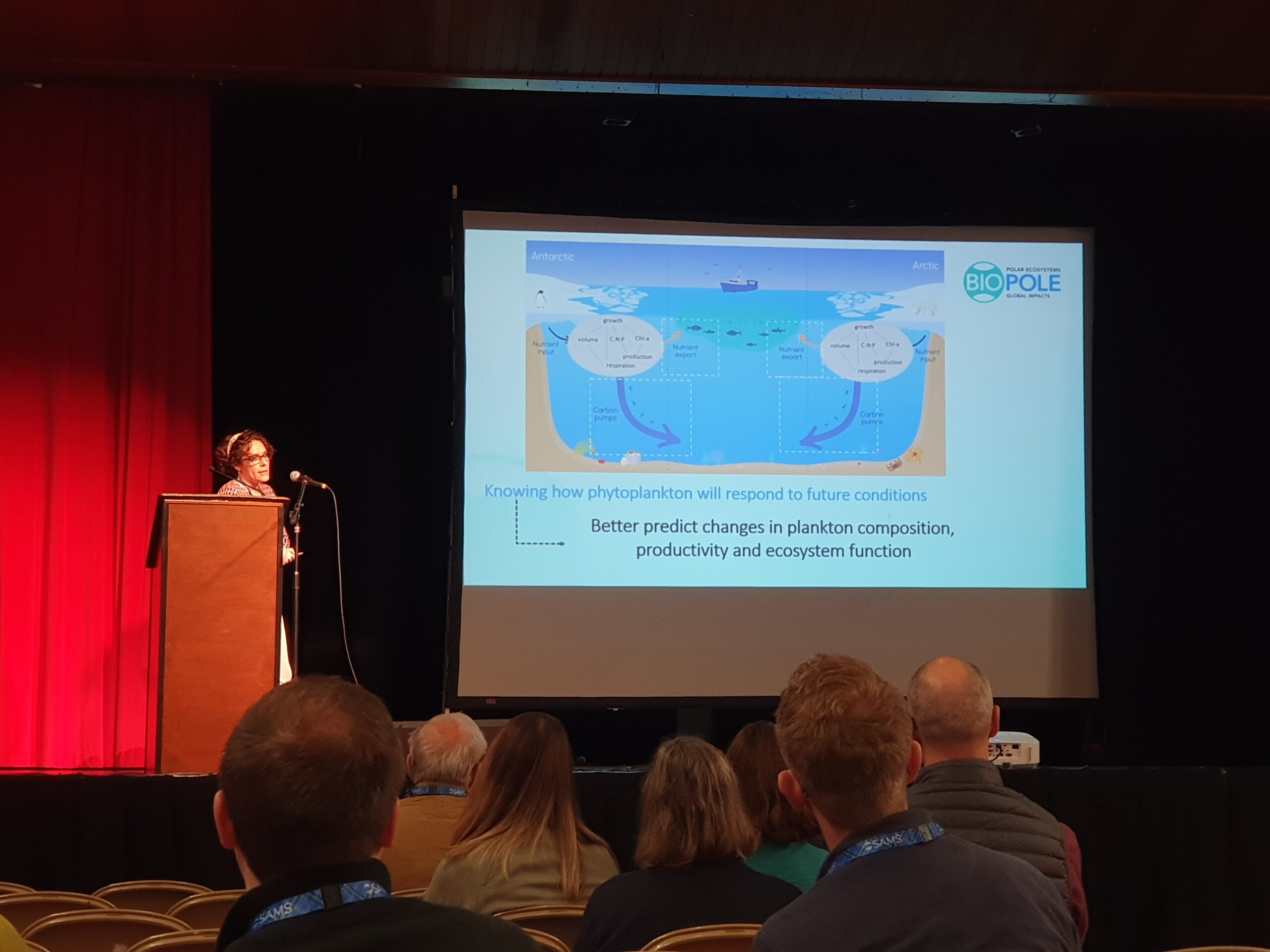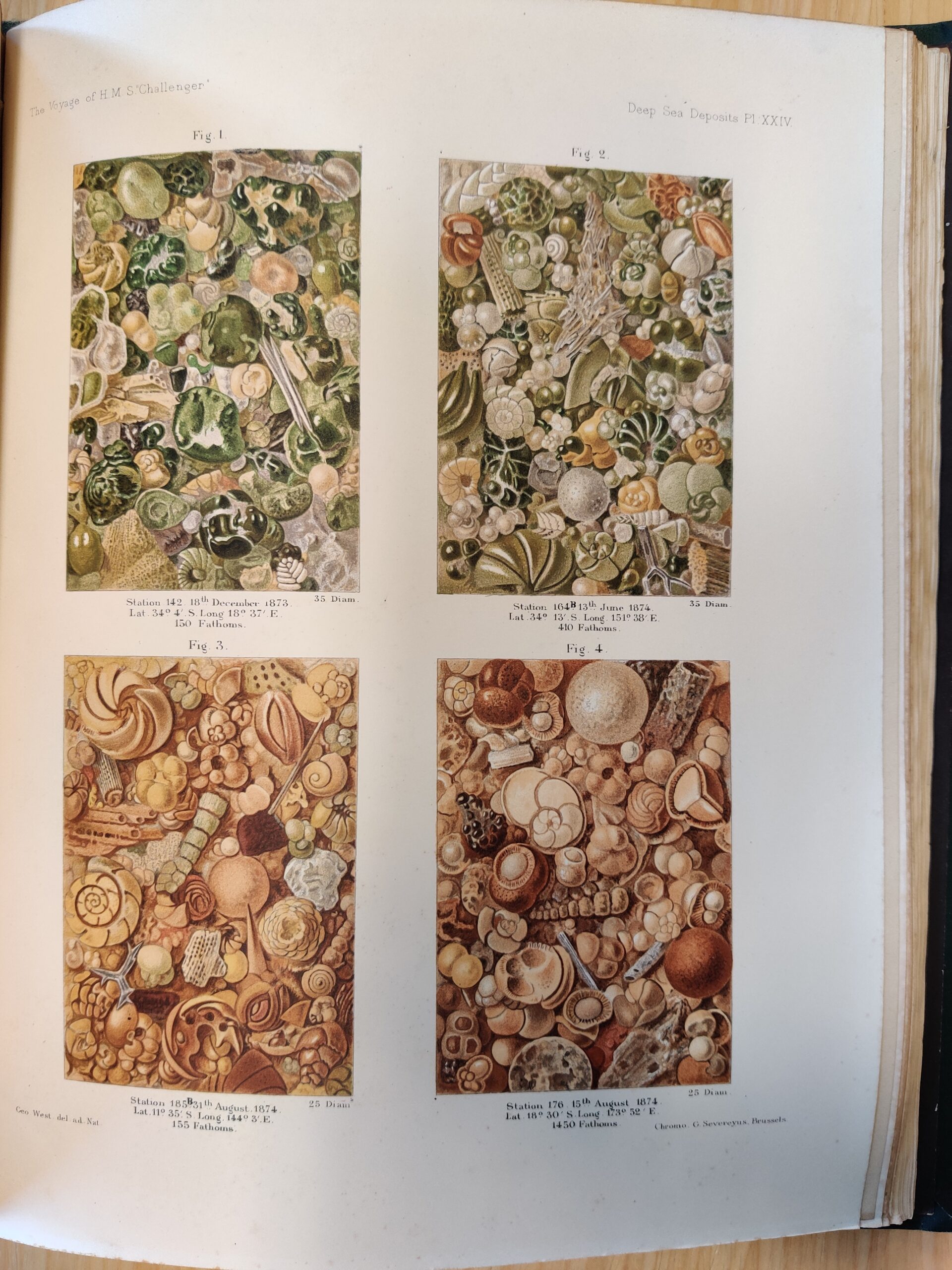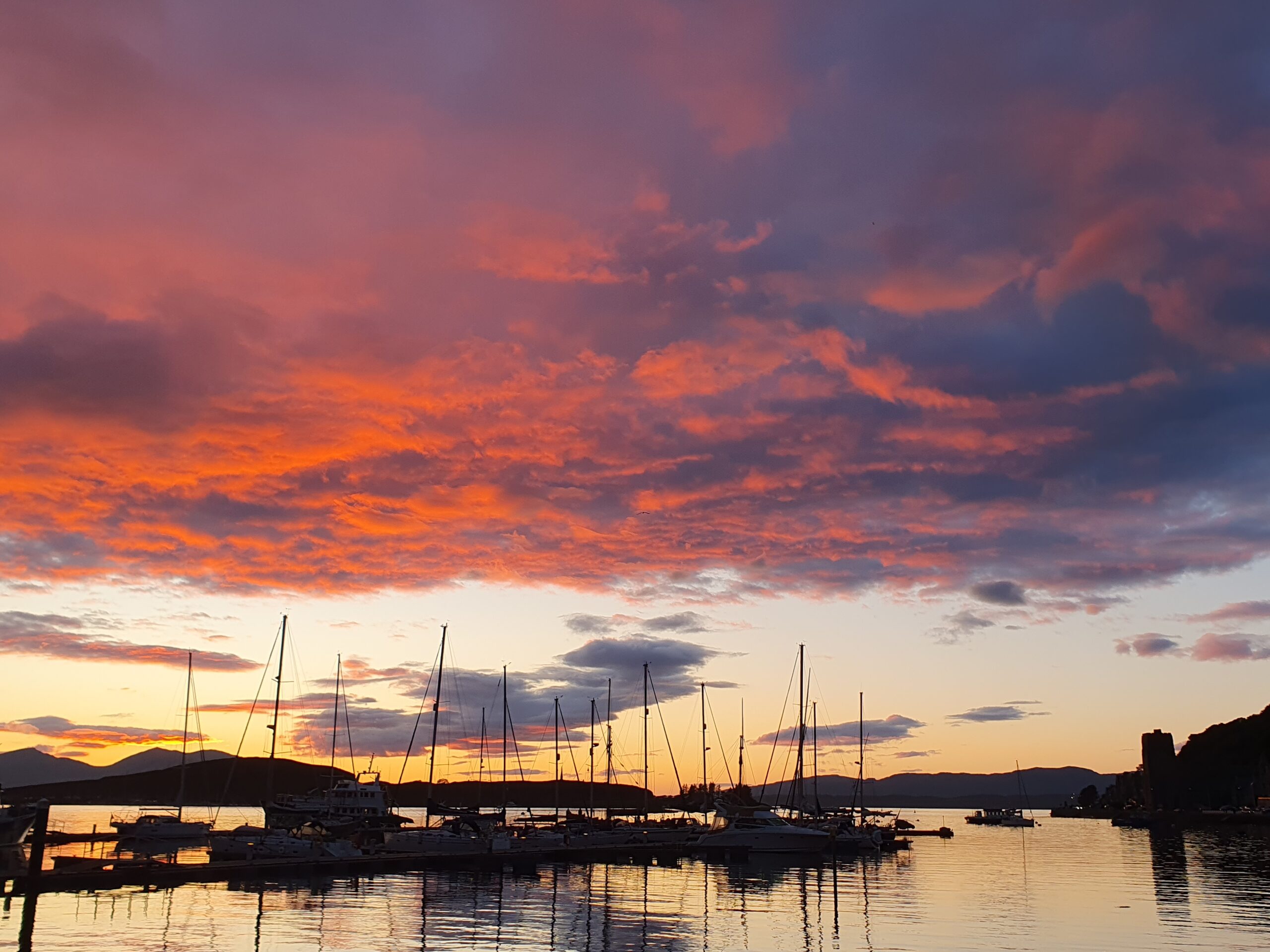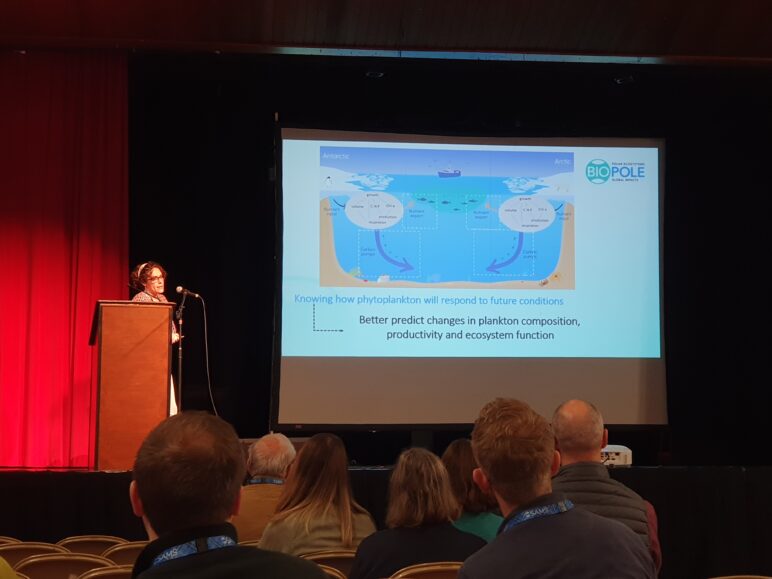In early September, several BIOPOLE researchers attended the Challenger Conference 2024, held in the beautiful town of Oban and hosted by the Scottish Association for Marine Science (SAMS). The Challenger Society for Marine Science is the main learned society for ocean research in the UK, and there is an associated biennial conference that brings together researchers around the country with a particular focus on community and early career researchers (ECRs).
This year, the Conference ran from Tuesday to Thursday, with additional side meetings and special interest group (SIG) activities on the Monday and Friday. The diversity of topic covered was fantastic from biogeochemistry to physics, deep sea environments, human impacts and marine management. BIOPOLE highlights included fantastic talks by ECRs Laura Taylor and Rhiannon Jones, as well as Povl Abrahamsen, Elena García-Martín, Emma Boland, Dave Munday, Alex Brearley, and Sophie Fielding. BIOPOLE research also featured on posters presented by Emma Young and Chelsey Baker. On the Friday, Kate Hendry hosted a meeting of the Challenger SIG Advances in Marine Biogeochemistry (AMBIO), and Dave Munday coordinated a meeting of the Ocean Modelling SIG (OMG).

Complementing the scientific talks, several tours were organised, and some of us had the opportunity to have in our hand original volumes of The Voyage of HMS Challenger report, curated in SAMS library. The marine deposit drawings from the 19th century were fantastic, with such details that could have been photographs of sediments as seen under microscopes. There was an official thanks at the Conference dinner to BIOPOLE’s Mike Meredith, who stepped down as Challenger President after a fantastic two-year term. The dinner was followed by the main high point of the event, the Conference ceilidh, during which many of these eminent scientists tested out their dancing skills on the dance floor!


The authors of the article – Kate Hendry and Emma Young from British Antarctic Survey and Elena García-Martín from National Oceanography Centre

